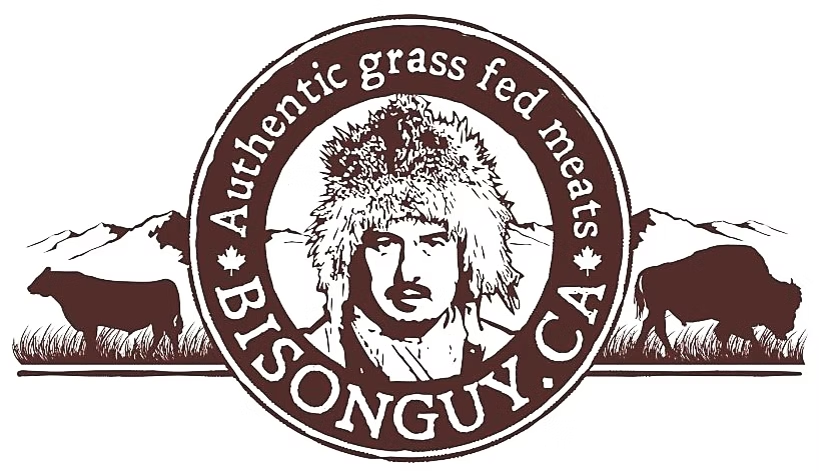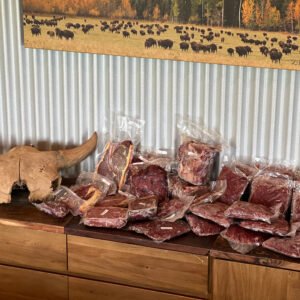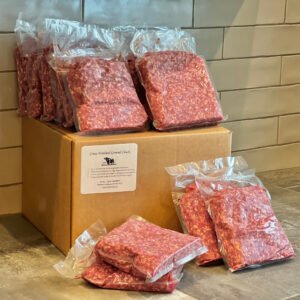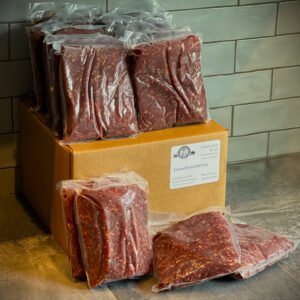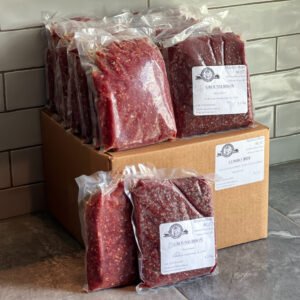Bale Grazing
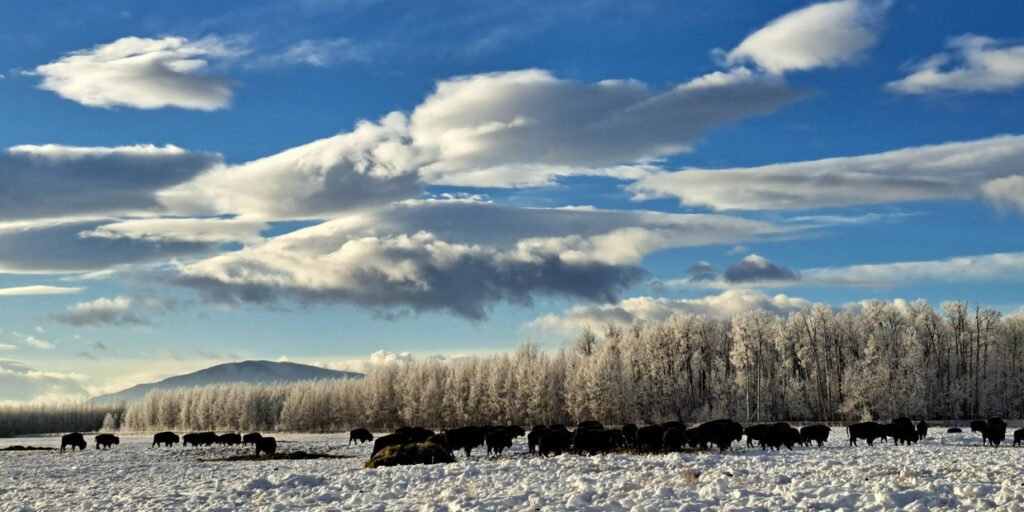
By far the most challenging season to work in is winter. I always refer to winter as a battle that lasts 5 months with the elements of long periods of darkness and extreme cold stacked against us. We have seen all sorts of cold, but by far the coldest was minus 52 when we were still ranching in Rycroft, Alberta. Regardless of the temperatures, the work goes on and we have to keep our livestock fed and looked after, while keeping all the other wheels of the ranch moving. Needless to say when you get a break from cold temps and get into the plus range in mid January it sure makes chores and life easier.

Sometimes the trucks get in late at night!
With the past 2 weeks of warm conditions we organized a convoy of hay trucks to start bringing in the last of hay bales needed to keep the bison herd and our remnant beef animals fed until April. Every truck is doing a 900 km plus round trip because there is no surplus feed in a smaller radius than this left. When the trucks come we unload the bales right directly into one of our pastures. Once enough bales are spread and all the twine is removed we add a herd of bison or beef to the mix. For the animals it’s a smorgasbord of hay that will last 4 weeks…with a few days of leftovers at the end. Once the bales are consumed and the party is over the bison or beef head off to the next pasture to repeat the process. What’s left behind is a pasture full of dung piles and yellow snow that all turns to nutrients to feed the growth of our pastures the following spring. This system of winter feeding is called “Bale Grazing” and we have been doing it for well over 20 years and on our pastures here since we took over the Ranch in Hudson’s Hope in 2013.

There are so many positive aspects of bale grazing. From a pasture fertility standpoint nothing works better than good old fashioned manure. Plants love it, it feeds our soil biodiversity, plants grow better and deeper, soil organic matter increases, which increases water holding capacity which then makes pastures more water absorbent and therefore drought resilient. Since we started bale grazing on this ranch we have pastures that have had a 4 fold increase in grass production.

Bale grazing gives our animals room to roam and in particular let the bison be what they were designed to be. (Beef cattle are lazy; they never wander much and are also content with less space). Sickness is next to nonexistent because the animals are living a Pura Vida lifestyle: lots of sun, snow, fresh air and clean surroundings. Happy and healthy animals also grow better and consequently produce higher quality meat.
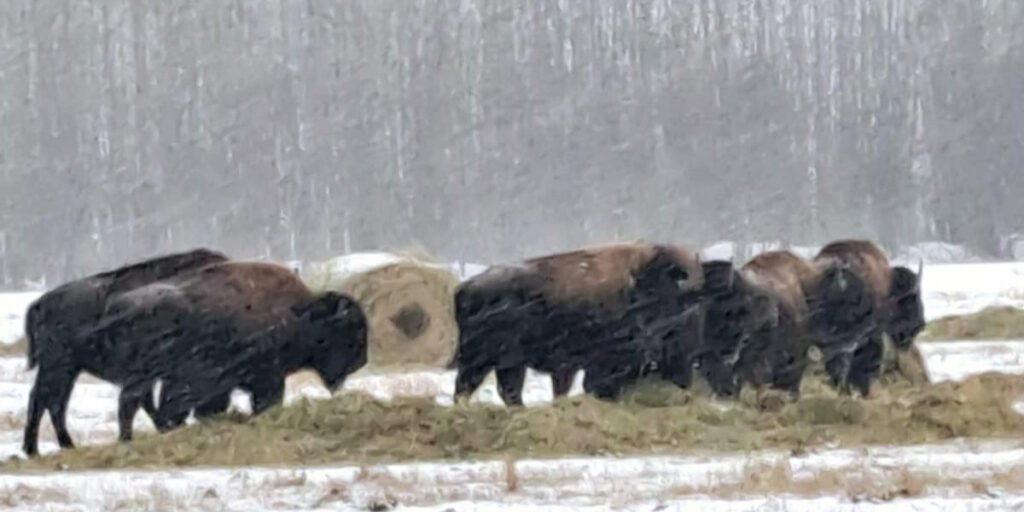
As important as fertility and animal health is, the thing we appreciate the most is that we have become more efficient with our time and dealing with cold weather. I hate the fact that we are trucking hay the distance we are this year, however we only touch the feed with equipment once to unload. After all the bales are spread, that’s it and we have eliminated 90% of the traditional winter feeding work. Best yet when we get reports of very cold weather we don’t stress because we know the animals are fed. They can eat as much as they want and I can have another coffee while we wait for it to warm up!

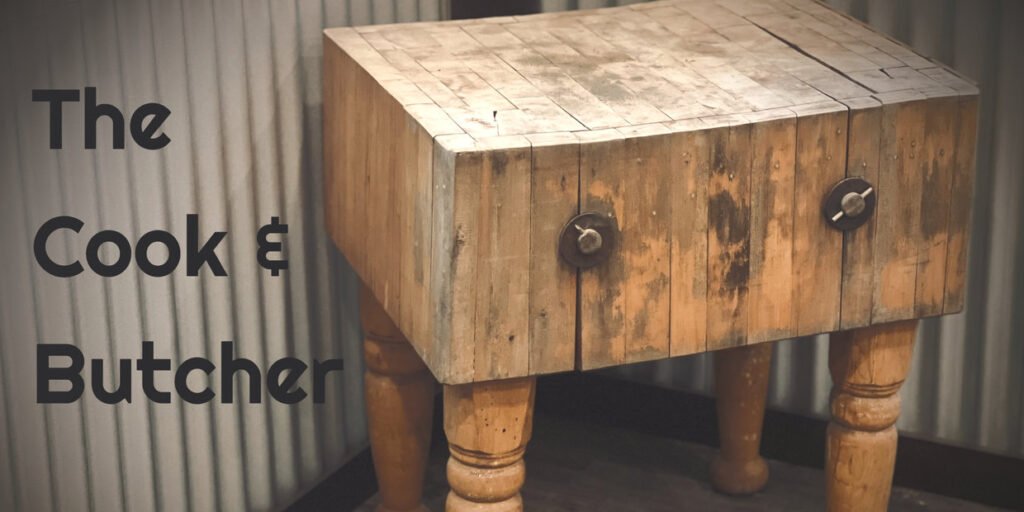
By Luna Weder and Spencer Berry
In keeping with some warm winter recipes, this week Luna has decided on her pulled beef/bison. This can be used for many different meals, like pulled sandwiches, burritos, quesadillas and much more. It’s an easy dish to prepare. Then just place in the oven and no need to give much attention to. With minimal clean up required afterwards, this provides you lots of time to get other things done in your day while still having a tasty nutritious meal at the end of it!
Though most roasts can be used for this recipe the roasts Luna went with were inside round. Located inside of the hind legs of bison and beef; it can be cut multiple ways and is a juicy and lean portion of meat. A roast is nice now and then but it can also be so much more! Inside round is also a larger roast which makes it ideal for a nice portion of the pulled beef/bison.
Luna has made the crew her delicious pulled beef/bison sandwiches for lunch on our Friday slaughter a few times now and it’s very nice to have a hot meal like that after a busy morning!

Ingredients:
2 inside round roasts 3-5 lb
1 onion
1 ½ cups ketchup
½ cup apple cider vinegar
1 ¼ cup Worcestershire sauce
¾ cup packed brown sugar
2 Tablespoons yellow mustard
1 Tablespoon paprika
2 teaspoons onion powder
teaspoons ground black pepper
4 garlic cloves, minced
½ cup water
Directions:
Preheat your oven to 275°F then place your roasts in your roasting pan. Cut up your onion and scatter it over your roast. In a bowl mix together your ketchup, apple cider vinegar, Worcestershire sauce, brown sugar, mustard, paprika, onion powder, black pepper, garlic, and water then pour evenly over your roasts. Cook for 7 hours or until the meat pulls apart without resistance.
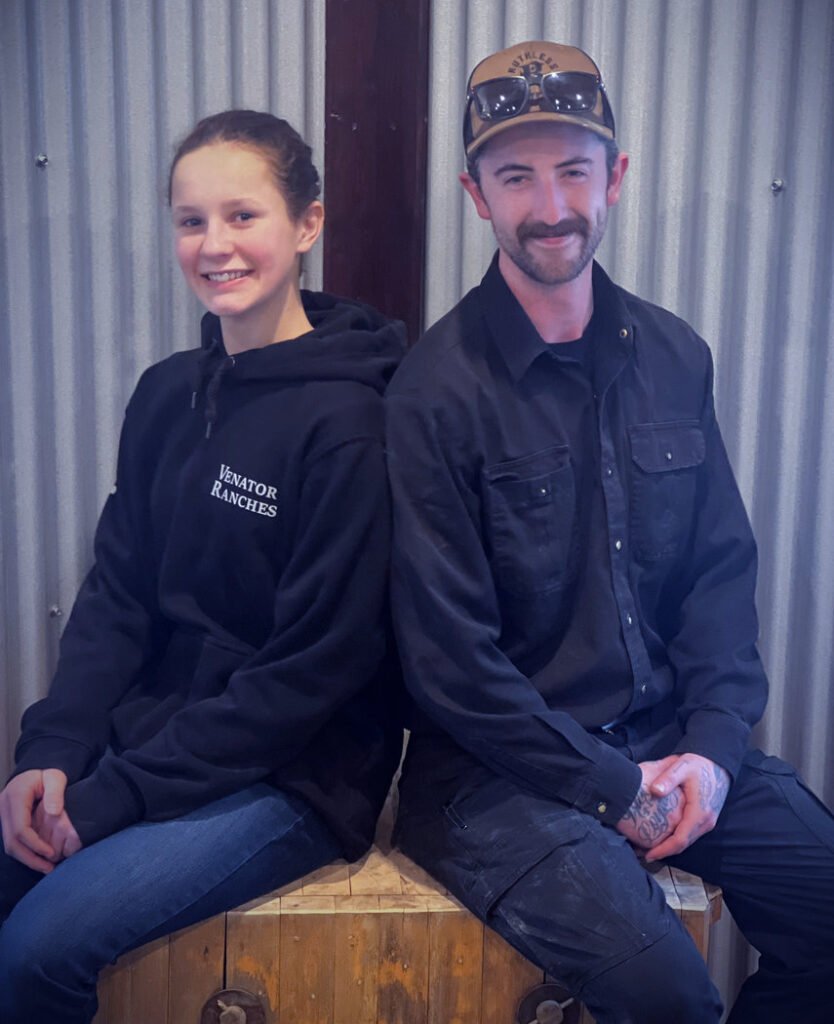
Stock Spotlights!
For ALL order adjustments email us directly at order@bisonguy.ca.
~Our system won’t allow you to add or remove items once order is placed~
We apologize for the inconvenience
